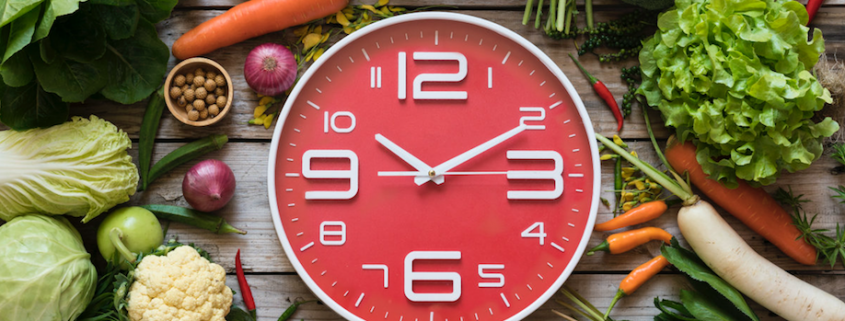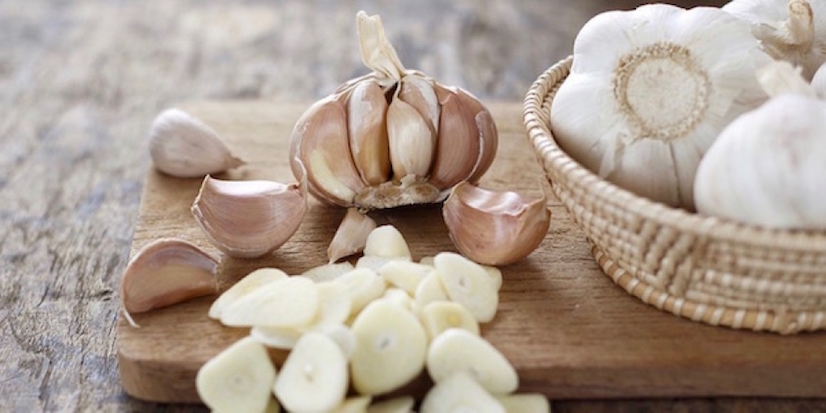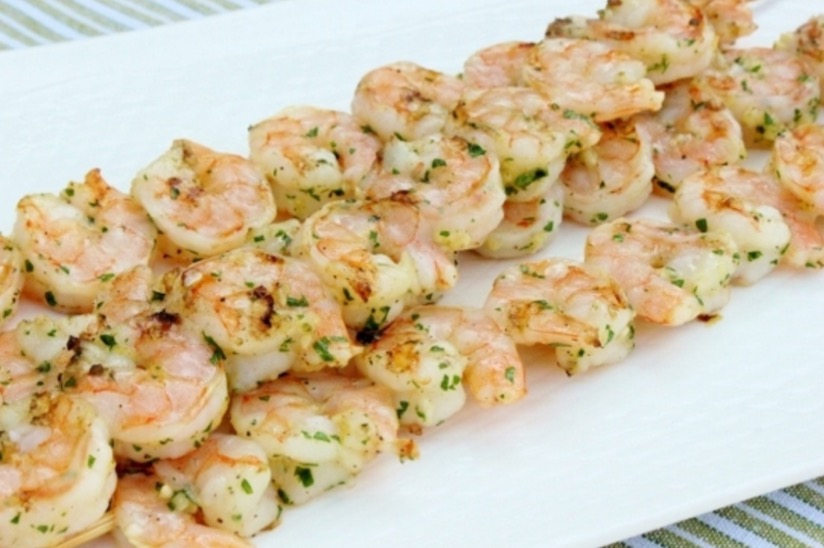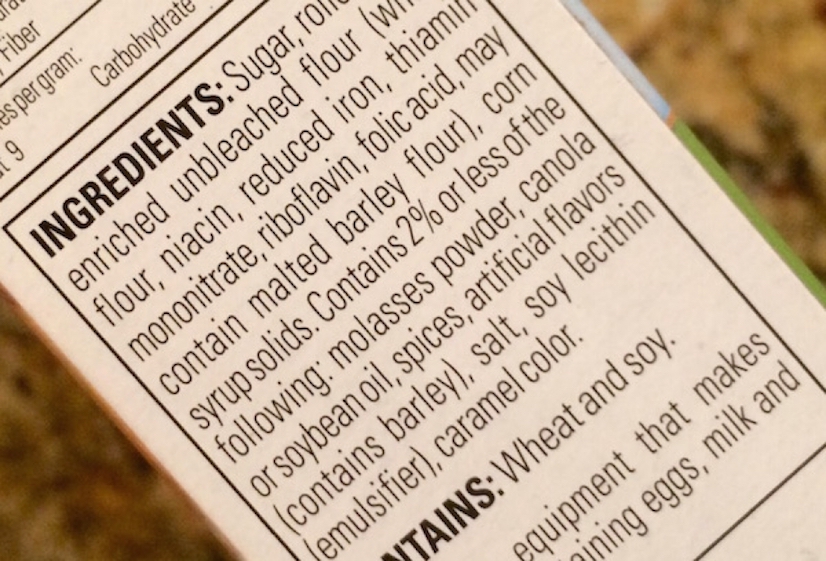Previously, I wrote an article introducing the concept of intermittent fasting, explaining exactly why it works, and how it can be especially beneficial for weight loss, long-term weight management and overall good health. In this article, I’ll share some specific details about what to eat for maximum results in case you’re interested in trying it yourself.
If you aren’t familiar with the phrase, “intermittent fasting” is essentially an umbrella term referring to any dietary regimen that involves “intermittent” cycling between periods of fasting and eating (“feasting”).
The true practice of intermittent fasting involves either eliminating or restricting all food and calorie-containing beverage consumption during certain hours of the day or days of the week. Unlike a lot of traditional dietary approaches, intermittent fasting doesn’t require continuous calorie restriction or even calorie counting for that matter.
During feasting hours, you can generally consume any foods and beverages you wish in as many meals as you can fit into your eating window.
The science behind intermittent fasting is simple: In the fasted state the body constantly breaks down stored fat to convert into useable energy. Fasting intermittently essentially prolongs the rate at which the body ‘feasts’ on its own stored fat.
The true practice of intermittent fasting involves either eliminating or restricting all food and calorie-containing beverage consumption during certain hours of the day or days of the week.
Now, a common misconception is that you can eat any and everything you want when “feasting”.
There’s a bit of truth to this but it’s not black and white.
While food and/or calorie restriction isn’t necessary during periods of feasting, the overall quality of the foods you eat does matter. So, whether you choose to follow a one-day, two-day, alternate day, or 16:8 fasting approach, your meals should contain a well-balanced mix of key macronutrients and micronutrients.
This is best achieved by eating a wide range of whole foods in order to prevent unnecessary nutrient inadequacies and deficiencies over time. Eating this way generally leaves little wiggle room for nutrient-devoid foods, since the stomach can only hold so much.
Related Article: How Malnutrition Drives Food Cravings and Fuels Obesity
Don’t get me wrong here, intermittent fasting does allow for more flexible eating patterns, so you can certainly enjoy a slice of pizza or a donut from time to time.
But, for long-lasting results, the need for adequate nutrition should not be ignored. And, unfortunately, most discussions of intermittent fasting generally lack crucial details pertaining to food, specifically foods to eat during feasting hours.
So, how should you actually eat during the coveted feasting window?
Well, to ensure adequate nutrition while fasting intermittently, I generally provide my clients with the following recommendations for eating during this time.
- Consume at least 6-8 (or more) daily servings of non-starchy, leafy green and color-rich vegetables like bell peppers and carrots. You’ll get the most bang for your buck by combining them in smoothies and salads, omelets, soups, stews, and stir-fry dishes.
- Stay within the limits of 2-4 daily servings of fruit eaten raw as stand-alone snacks or used as flavor enhancers in smoothies, cereals and salads. Fresh, frozen and dried fruit are all acceptable.
- Treat starchy vegetables, legumes (beans, lentils and soybeans) and/or whole grains (oatmeal, quinoa and brown rice) as one food group and err on the side of 3-5 daily servings, collectively.
- Take in around 2-3 daily servings of high-fat foods largely in the forms of extra virgin olive oil, full fat salad dressings, avocado, nuts and seeds (nut and seed butters count too). I generally recommend combining fatty foods with veggies for maximum nutrient absorption.
- Consume 2-3 daily servings of whole eggs, cheese, milk and other high-quality dairy foods. If you don’t consume dairy foods, apply the recommend daily servings to your dairy-free products and soy-based alternatives.
- Eat 1-3 daily servings of fish and seafood, poultry and/or lean meat. Ideally, I recommend limiting intake of lean meat to no more than two servings per week.
Related Article: Understanding Serving Size Values on Food Labels
That’s a lot of food, right?
And, notice I didn’t make mention of any overly strict rules.
That’s because one of the main benefits of intermittent fasting is the lack of healthy eating ‘rules’.
Think of the list I’ve provided here as more of a general checklist.
Instead of focusing on combining ‘this’ vegetable with ‘that’ vegetable or eating the ‘right’ type of fish with the ‘right’ portion of whole grains, you’re just eating. It doesn’t really matter how you get those whole food groups in, just get them in within your allotted eating window. It doesn’t matter how small or large your meals are, just eat up!
This is not as difficult as you might think.
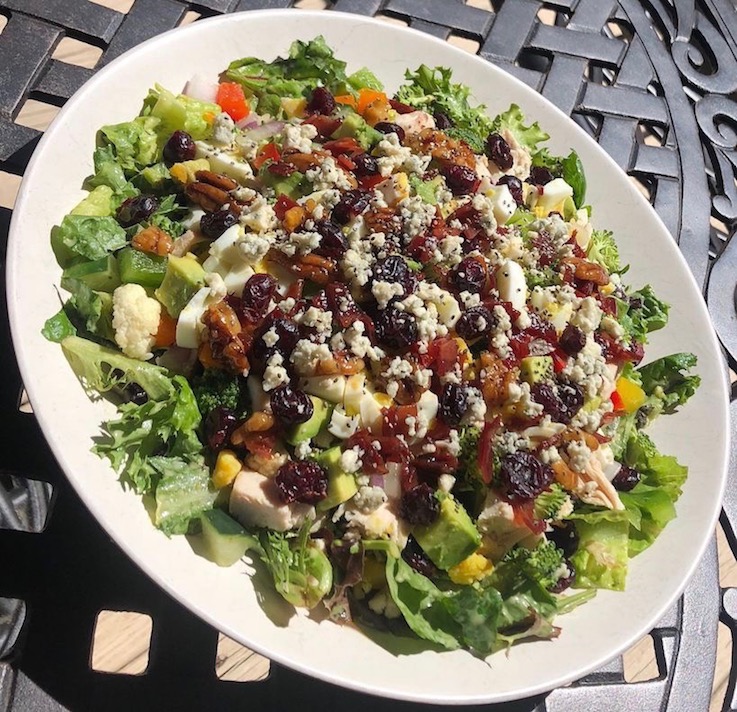
Just take a look at the image here. This is one of the typical salad blends I regularly consume during my own feasting window, which typically lasts 7-8 hours a day.
You’re looking at about 75-80% of my daily food intake in one meal!
No rules!
I even allow myself 5-7 portion-controlled servings of alcoholic beverages or other treats each week.
Notice I didn’t make any mention of counting calories either.
One of the main benefits of intermittent fasting is the lack of healthy eating ‘rules’.
For one, intermittent fasting tends (albeit indirectly) to lead to less calorie intake due to the limited time available to eat. But, truth is, simply shifting your focus from calorie counting to consuming high-quality foods can negate the need for calorie counting altogether.
Related Article: 3 Highly Effective Ways to Lose Weight Without Counting Calories
Indeed, eating a diet that’s rich in the whole foods I’ve highlighted as part of your intermittent fasting regimen can substantially boost your body’s natural fat burning mechanisms while also helping to reduce cravings, curb hunger, and control appetite during fasting hours.
In addition to consuming whole foods, adequate water intake throughout the day is also critical and quite helpful while fasting intermittently, as signs of thirst and hunger are very similar. Oftentimes, you’ll feel as though you’re hungry when you’re in fact just thirsty.
Related Article: Why Water is More Important Than Food
You can also consume calorie-free beverages like coffee and tea (without additives) freely—And, I generally recommend doing so as these beverages are known to curb hunger, boost metabolism, and support overall good health.
The Net-Net
As a health coach and scientist with expertise grounded in fitness, nutrition and rehabilitation, I can honestly say that intermittent fasting is one of only a few dietary regimens I generally recommend. So, hopefully, I’ve provided you with some useful information pertaining to what to eat when following an intermittent fasting regimen.
My goal isn’t to convert you to a life of intermittent fasting. My goal here is for you to feel empowered and inspired enough to dismiss some of the ‘rules’ that may have been instilled in your head in regard to what, when, and how you should be eating.
It’s all about making wise food choices and also recognizing that there’s no one size fits all approach.
Though many nutritionists, physicians and medical researchers remain skeptical of the concept, intermittent fasting is constantly being investigated and continuously proven as a safe and effective healthy lifestyle strategy.
When nutrient-dense foods are incorporated, prolonged, and even periodic, intermittent fasting has been associated with successful weight loss, long-term weight management and a lower risk of heart disease, diabetes, arthritis, neurodegenerative diseases and various forms of cancer.
Due to the flexible nature of this eating style, you will certainly find solace in the fact that this diet can conveniently be implemented according to your schedule. Flexibility is truly the key to long-term health success.

